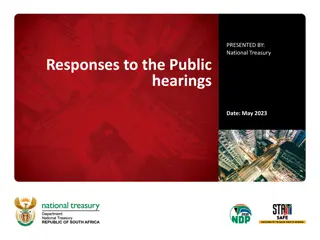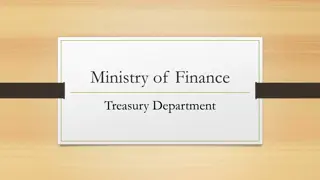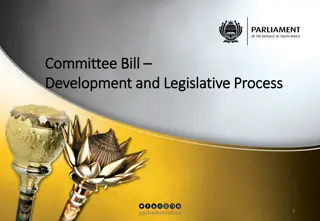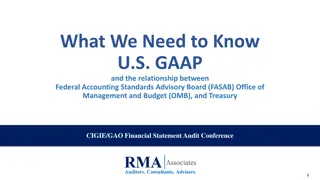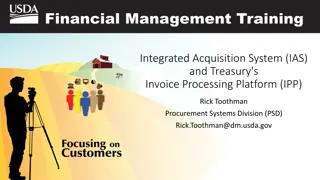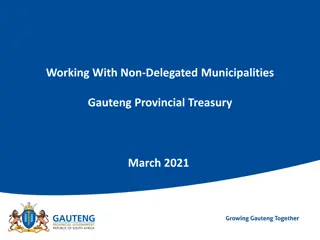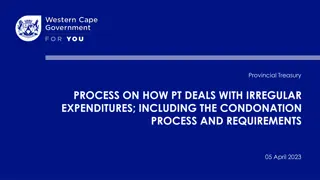Understanding Treasury Bills Market and its Significance in Finance
The treasury bills market is where finance is provided against government-issued short-term promissory notes. These bills are considered safe and liquid assets with maturity periods of 91, 182, or 364 days. Major participants include the RBI, commercial banks, and other financial institutions. Treasury bills offer advantages like safety, liquidity, and serving as ideal short-term investments, but they also have defects such as low interest rates and limited trading activity.
Download Presentation

Please find below an Image/Link to download the presentation.
The content on the website is provided AS IS for your information and personal use only. It may not be sold, licensed, or shared on other websites without obtaining consent from the author. Download presentation by click this link. If you encounter any issues during the download, it is possible that the publisher has removed the file from their server.
E N D
Presentation Transcript
TREASURY BILLS MARKET The market where finance is provided against the treasury bills is called as treasury bills market. The term treasury bill refers to the promissory notes or finance bills issued by the government for its short-term finance requirements. RBI is the only agency which issues these bills on behalf of the Government. These bills are issued through auction and do not require any endorsement or acceptance since it is a claim against the government. Since, its repayment is guaranteed by the government, it is considered as one of the most safe and liquid financial asset. Generally, the treasury bills have a maturity period of 91 days or 182 days or 364 days. These bills are considered as one of the important means of parking temporary surpluses of various financial intermediaries.
There are two types of treasury bills, viz., (a) Ordinary or Regular bills and (b) Ad hoc bills. Ordinary treasury bills are issued to the general public, banks and other financial institutions with a view of raising resources for the central government to meet its short- term financial needs. Ad hoc treasury bills are issued only in favour of RBI. They are not sold in the money market.
MAJOR PARTICIPANTS OF TREASURY BILLS MARKET 1. RBI which issues treasury bills on behalf the government 2. Commercial banks which deal in this market to meet requirement of Statutory Liquidity Ratio (SLR) and Cash Reserve Ratio (CRR) and account for nearly 90% of the transactions in this market. 3. The Discount and Finance House of India (DFHI) and the Securities Trading Corporation of India (STCI) which activates the treasury bills market 4. Other financial institutions like LIC, GIC, UTI, IDBI, ICICI, IFCI, NABARD, etc., 5. Corporate customers and the individuals of very high financial status
ADVANTAGES OF TREASURY BILLS 1. Highest Safety 2. Most Liquid 3. Ideal for short-term investment 4. Ideal for fund management as they are traded in the secondary market 5. Ideal for meeting Statutory Liquidity Requirement of commercial banks 6. Ideal for meeting Cash Reserve Requirement of commercial banks 7. Ideal source of fund for the government for its short term requirement 8. Ideal non-inflationary monetary tool for control of economic conditions by the government 9. Ideal for using the bills for hedging purpose. (taking advantage of high interest rate in one investment by substituting it in another investment is called as hedging)
DEFECTS OF TREASURY BILLS 1. Interest rate is very less compared to other securities 2. Competitive bidding is less among the participants 3. Less trading activity since the holders generally keep the treasury bills till maturity














